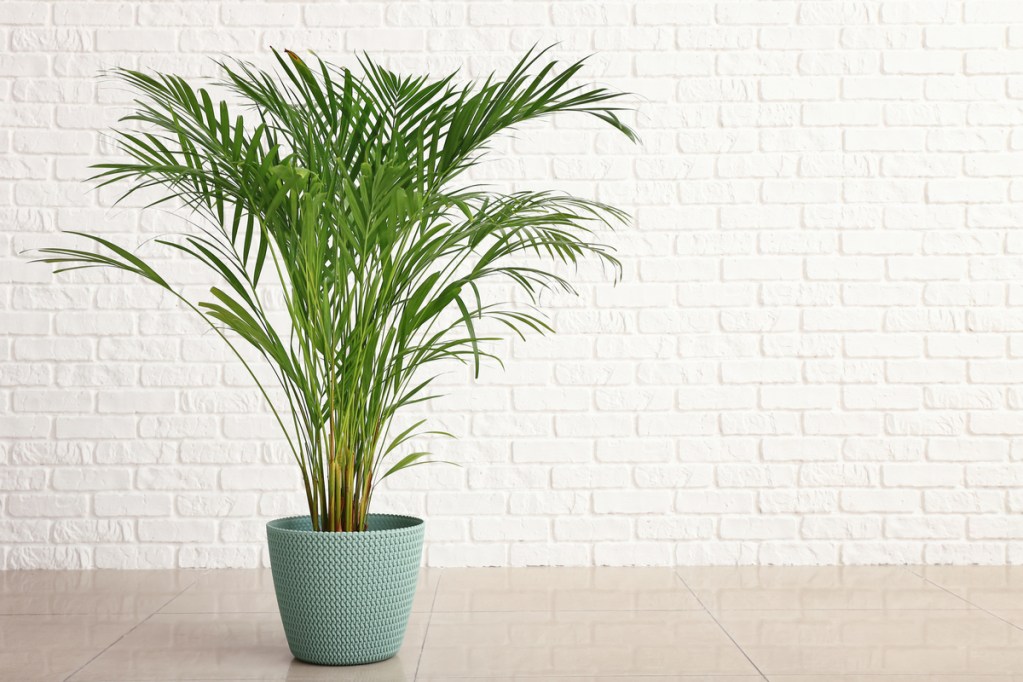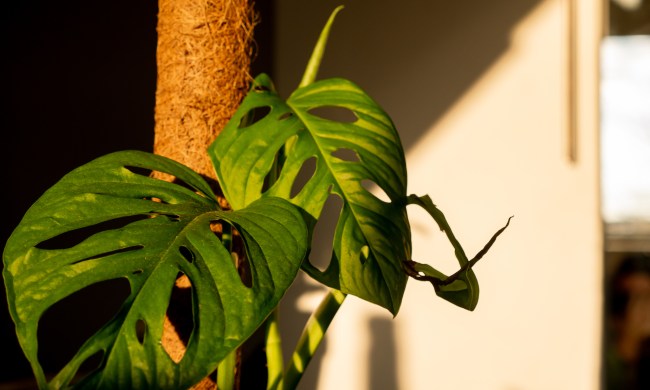Palm trees evoke images of sunny beaches, warm days, and stress-free relaxation. You can bring a little of that into your home with a lovely indoors palm tree. While not every palm tree is a good fit for indoor spaces, due to either size or care requirements, there are several smaller palm trees that can thrive indoors. If you want to add one to your collection, then you’re in the right place! Here are four house palm tree types you can start growing today, and how to keep them happy and healthy.
Parlor palm

The parlor palm is an excellent indoor palm. It’s mid-sized, with a mature height between two and six feet tall. It enjoys bright, indirect light, making it an excellent choice for rooms that are moderately well lit. It can tolerate some shade, but direct sunlight can result in sunburnt leaves. The parlor palm likes moderate watering, and is sensitive to overwatering, so make sure the soil is able to dry out between waterings.
This palm is also quite visually appealing, growing in small clumps with trunks that resemble bamboo. Although they don’t typically bloom indoors, if you move your parlor palm outdoors during spring, you may be in for a treat! However, be sure all frost has passed before you do so! These palms are not at all cold tolerant, and shouldn’t be exposed to temperatures below 50° F.
The leaves are nontoxic, to people and pets, so you don’t need to worry if you have small children or pets that like to chew on plants. Plant your palm in a peaty potting mix, give it a little slow-release fertilizer in spring to encourage growth, and you should do just fine. This palm is not picky and is great for first-time plant owners.
Sago palm

Sago palms, or Cycus revoluta, are an excellent option if you don’t have room for a larger or midsized palm at the moment, as they grow extremely slowly, especially in containers. While their full size can be as tall as 15 feet, it can take several decades to reach that height, giving you plenty of time to adjust, repot, or rehome your palm.
They are slightly trickier to care for than the other palms on this list, though. For starters, this palm enjoys bright indirect light, and, while it can tolerate a little bit of shade, it can develop problems if left in the shade for too long. Sagos are somewhat drought tolerant and certainly handle underwatering with more grace than overwatering. Make sure their potting soil is well draining, and let the soil dry between waterings.
Sago palms don’t have any chronic severe problems with pests, but can become home to scale bugs and spider mites in areas of low humidity or low airflow. In addition, some gardeners become concerned about yellowing leaves. Old, dying leaves turn yellow naturally, and, once dry, can be removed. However, if young leaves are turning yellow, it is likely caused by overwatering.
Kentia palm

If you’re looking for a palm that is more tolerant than other palms, or even other houseplants in general, the kentia palm is the palm for you. This palm has the same classic look as any other palm, with long frond-like leaves, and can grow to a height of 12 feet tall, although it typically doesn’t reach its full height indoors. However, it is much more shade tolerant than other palms, making it a great fit for areas that palms wouldn’t normally thrive in.
Kentia palms, while not thoroughly cold resistant, are more cold tolerant than most other palm varieties, as well. In addition, they have beautiful flowers and bloom in winter, making them a wonderful way to brighten up an area while other houseplants are dormant.
Areca palm

Areca palms are similar to kentia palms in appearance, but their leaves are more similar to a typical palm tree. These palms are easy to grow indoors, enjoying warm temperatures, bright sunlight, and regular watering. When grown outdoors, areca palms can grow a large number of tiny yellow flowers.
Although they rarely bloom indoors, you can move your areca palm outside during warm weather to increase the odds of seeing it bloom. When grown indoors, areca palms typically grow to between 6 and 7 feet tall, but they do not get much wider than 4 feet. This makes them a great plant for corners or tight spaces, where they have vertical room to grow but not a lot of space horizontally.
Parlor palms, sago palms, areca palms, and kentia palms are all excellent indoor palms. Which one is right for you is up to you to decide! If you’d like a stately palm to stand in a bright room, then the parlor palm is what you need. Want something smaller, slower growing, and a little more modern looking? Go with the sago! Do you need a plant that’s capable of surviving and thriving where others fail? Then the kentia palm is the palm for you! All three of these palms are beautiful and will be sure to add a touch of the tropics to your home.




